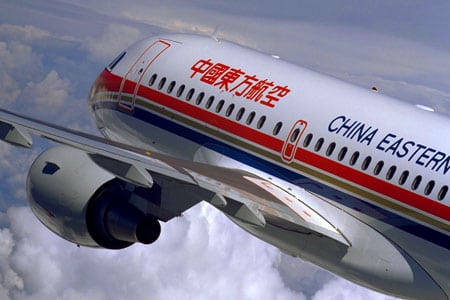
File photo
The government of Guangzhou City and Bluefocus IFEC Technology are set to jointly establish the “Belt and Road” in-flight internet fund with a capital injection of 10 billion yuan ($1.5 billion). Also supporting the program is China’s first Inflight Internet Centre for Mass Entrepreneurship and Innovation and a $1 trillion yuan ($151.1 billion) Inflight Internet Industrial Park.
Bluefocus said the center and the park aim to promote Chinese products and content with independent intellectual property rights to airlines within the Belt and Road initiative. They would also support outstanding enterprises with independent intellectual property rights.
With this agenda, the Chinese government intends to become another major competitor in the in-flight connectivity (IFC) industry, alongside the U.S. According to Bluefocus, its goal is to benefit 500 million passengers with nonstop online surfing experience on their in-flight journeys, within the next five years.
Bluefocus said Chinese society has undergone enormous changes in the past 40 years. The change is particularly perhaps most notable in internet industry, as is seen in its 751 million internet users. The company said internet penetration rate in the country has reached 54.3%, 4.6% higher than the global average. China has 700 million mobile internet users with an annual growth rate of 5.9%, Bluefocus continued, and 95.1% of its internet users primarily use mobile devices.
However, unlike the popularity of the internet, Bluefocus said the development of China’s IFC began relatively late. Bluefocus said the Chinese government recognizes its developmental position, particularly behind the U.S., and has begun to actively pursue its newly formed IFC agenda.
According to Bluefocus, there are currently about 55 airlines around the world that provide IFC services. Of the more than 4,000 Wi-Fi-equipped aircrafts, more than 80% are now serving in North American airlines. In contrast, the company continued, China now has only 140 Wi-Fi-enabled aircraft in operation, representing 6% of the total size of China’s civil aviation fleet.
This governmental initiative focuses on satellite, Bluefocus said. In July 2016, the Shenzhen municipal government began construction of China’s first global high-throughput broadband satellite communications system. Bluefocus said the Shenzhen government plans to launch this satellite by the end of 2018 and begin satellite communications operations services in 2019. In April this year, China also launched its first high-throughput communications satellite, called “Zhongxing 16.”
According to the plan, the Guangzhou government will provide support in policy, land, capital and other areas. BlueFocus plans to bring together leading companies as stakeholders in the whole industry chain to maximize industrial value through commercial operation, as well as to foster a 100 billion yuan ($15.1 billion) industrial cluster in five years.
This article includes reporting by Via Satellite, an Avionics sister publication. It has been edited.